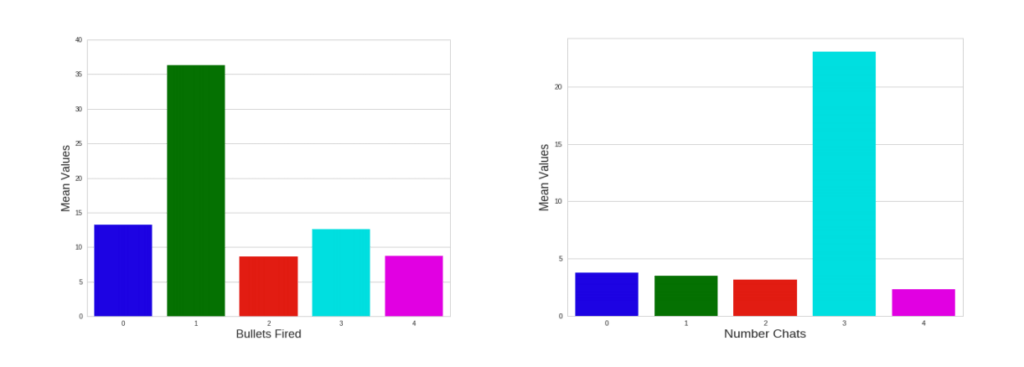Blog
How artificial intelligence can tell you what kind of gamer you are

The video game industry is enormous. By many accounts, it is larger than either the film or the music industry, yet it is also much more volatile. Studios can rise to fame in a matter of months and then collapse just as rapidly. Even more so than elsewhere in the entertainment industry, it is essential for video game developers to understand their customer base and to understand what aspects of a given game are liked or disliked so that they can adapt their product to maximise its success.
My Fellowship project was about studying player behaviour. I worked with Bossa Studios on understanding players in their ambitious new video game, Worlds Adrift. Worlds Adrift is a massive online multiplayer game in which players enter an enormous, simulated virtual world. Players freely roam the landscape, crafting and building ships and interacting with the world and one another.
Whenever a player engages in a particular activity in-game, that event or feature is recorded and logged in an SQL database in Google Cloud. Many features are recorded, such as a player mining a resource, a player shooting a bullet or a player exploring a new part of the map. By creating an aggregate set of features for each user, we can hope to uncover the personalities of the different people playing the game.
Gamer personalities are often described using a four-way split based on the work of the psychologist Richard Bartle. Players are categorised as ‘Socialisers’ (driven by emotion, empathy and communication), ‘Killers’ (driven by conflict), ‘Achievers’ (driven by understanding systems and personal fulfilment) or ‘Explorers’ (driven by curiosity). The goal of my project was to determine whether such a split appears in the Worlds Adrift data set.
Since many of the features recorded in-game, such as ‘bullet-fired’, naturally fall into one of these personality groups, it follows that by grouping similar players in this feature space we can hope to split the data set by personality.
More technically, what we are doing is clustering — grouping statistically similar points/users together in feature space. Since we have no labelled data (we do not know a priori the personality of any users), this is a fully unsupervised problem. By a careful selection of relevant features, I was able to show the Worlds Adrift data set segmented into five distinct clusters using k-means.

In this figure, the data has been dimensionally reduced to 3D for easy viewing using the PCA algorithm. (Other options such as t-SNE are also possible for the visualisation step.)
Having clustered the data set, the personality of each cluster can be determined by plotting the mean values of all the features per cluster.

If we analyse the dominant features in two of the clusters, we can see that the green cluster is a ‘Killer’ cluster and the cyan cluster is a ‘Social’ cluster. Similar analysis reveals the blue cluster to represent ‘Explorers’, while the magenta cluster is an ‘Achiever’ group. The remaining red cluster is a superposition of various personality types, with no dominant behaviour.
I extended the analysis above: by clustering only part of the data as a training set, it is possible to predict the personalities of new users (as a test set) with ~80–90% accuracy.
Being able to predict the personality of new users leads to powerful actionable consequences for Bossa Studios. It allows them to incentivise players to carry out activities that they know they will enjoy, increasing the stickiness of their product. Moreover, by tracking the evolution of clusters over time it allows them to guide their game design.
If the ‘Explorer’ cluster were to rapidly shrink in favour of a ‘Killer’ cluster over time, then Bossa would be able to alter their game as needed to retain the players they want.
Alex Adam took part in the Faculty Fellowship May 2017. Prior to the Fellowship he completed a PhD in physics at Imperial College.




